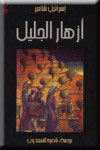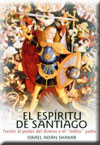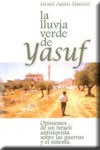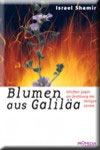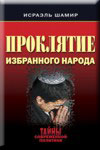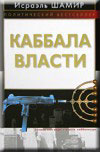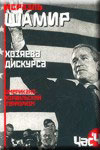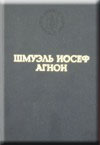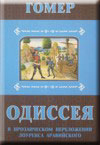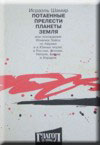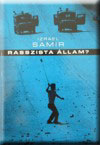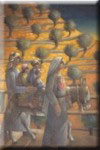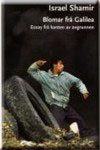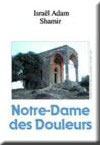Culture of Deceit
Edmund Connelly
For those conversant with the Bible, the twin themes of Jewish resource acquisition and deceit will be familiar. For example, in A People That Shall Dwell Alone: Judaism as a Group Evolutionary Strategy, Kevin MacDonald describes this:
The biblical stories of sojourning by the patriarchs among foreigners are very prominently featured in Genesis. Typically there is an emphasis on deception and exploitation of the host population, after which the Jews leave a despoiled host population, having increased their own wealth and reproductive success. Indeed, immediately after the creation story and the genealogy of Abraham, Genesis presents an account of Abraham’s sojourn in Egypt . Abraham goes to Egypt to escape a famine with his barren wife Sarah, and they agree to deceive the pharaoh into thinking that Sarah is his sister, so that the pharaoh takes her as a concubine. As a result of this transaction, Abraham receives great wealth . . . .
Far from being a unique story, it portrays a pattern. MacDonald concludes, “Like the others, the Egyptian sojourn begins with deception and ends with the Israelites obtaining great treasure and increasing their numbers.”
The most famous Biblical story of deceit is the story of Exodus. Joseph helps his relatives enter by telling them to deny being shepherds because the Egyptians dislike shepherds. The Israelites reside in Egypt and are successful: “And Israel dwelt in the land of Egypt . . . and they got them possessions therein, and were fruitful, and multiplied exceedingly” (Gen. 47:27).
The Book of Esther is another fascinating tale of deceit in which Esther, a beautiful Jewish woman, insinuates herself into the inner court of a powerful king but keeps secret her Jewish identity. Eventually, she is able to both save her fellow Jews and have the king kill her enemy, Haman, and his ten sons. The Jews then kill 75,000 others with the approval of the king: "The Jews struck down all their enemies with the sword, killing and destroying them, and they did what they pleased to those who hated them" (Est. 9:5). Meanwhile, her cousin Mordecai assumes a prominent position in the royal court.
To this day, Jews celebrate these acts of deception and political murder as the holiday of Purim. This is an important indication that fraud and deception are part of the official ideology of Judaism.
In some ways it is sobering to think that some two thousand years after Esther and her cousin Mordecai used cunning to acquire great status and dispatch enemies, a similar pattern exists in the modern world. The most recent example is the arrest of 44 people, including several rabbis, in a money laundering and influence peddling scheme involving payoffs to public officials in New Jersey . Rather than marginal figures, the rabbis involved were highly respected pillars of the Syrian Jewish community — a traditionalist Jewish group that remains largely separate even from other Jewish groups. What's fascinating is that Rabbi Israel Dwek, a founder of the New Jersey synagogue at the center of the scandal, renounced his own son, Solomon Dwek, because the son had cooperated with the FBI after being indicted on bank fraud charges. The father's actions were entirely within the Talmudic Law of Moser — the prohibition of a Jew informing on another Jew. The father will therefore "sit Shiva" for his son — a ceremony observed when an immediate family member has died.
In other words, illegal activities involving deception and deceit are tolerated within the Jewish community. The rabbi does not issue ringing condemnations of the money launderers and the human body parts sellers. Nor does he condemn his son for being involved in bank fraud. The only real crime is to inform on other Jews. The only ethical principle involved here is the age old "Is it good for the Jews?"
Of course white collar crime is one of the standard stereotypes about the Jews, a description that seems to follow them wherever they go. Apologists for Jews claim that such crime occurs among non-Jews as well. The difference, however, is not only in the greater likelihood among Jews (see here for an academic treatment that tiptoes around the issue), but, more importantly, that Jewish white collar criminals do not face censure within their own communities.
The legitimacy of Jewish white collar crime is also indicated by the following comment on the New Jersey scandal by Moshe Rosenberg, an Orthodox rabbi:
Unfortunately, unethical and even illegal behavior too often does not face serious censure in our communities. I’m reminded of a hilarious YouTube video that made the rounds last year. It featured a rabbi taking a call from someone inquiring about a young woman from his congregation for match-making purposes. The satirical script, meant to highlight the ridiculous lengths to which some circles go in such background checks and our community’s sometimes misplaced values, had the caller ask, “Has anyone in the family ever been convicted of anything other than a white-collar crime?” The rabbi responds, “Only white-collar, and the sentences were all done in federal, minimum-security places, with Daf Yomi, minyanim, glatt kosher chasidishe shechita.” While the video was a spoof, it conveyed an underlying truth.
A Modern Orthodox blogger complained about the focus within the Jewish community on the actions of the informer Dwek rather than the crimes of the Jews: “Those who continue to complain about [Dwek] and say nothing about these criminal rabbis once again show just how pervasive is the idea that what these rabbis did wasn’t all that bad. What WAS too bad is that they were caught.”
As indicated below, Jewish white collar crime is legitimate not only in traditional Jewish communities like the Syrian Jews in New Jersey and Brooklyn , but in the wider contemporary Jewish community as well.
Indeed, academic historians, including Paul Johnson (A History of the Jews) and Albert Lindemann (Esau’s Tears: Modern Anti-Semitism and the Rise of the Jews), have shown that this pattern of Jewish deception and fraud in pursuit of wealth and its legitimacy within the Jewish community have a long history.
For example, in 1781 Prussian official Christian Wilhelm von Dohm published a tract claiming, in Johnson’s paraphrase, “The Jews had ‘an exaggerated tendency [to seek] gain in every way, a love of usury.’ These ‘defects’ were aggravated ‘by their self-imposed segregation . . .’ From these followed ‘the breaking of the laws of the state restricting trade, the import and export of prohibited wares, the forgery of money and precious metals.’” In short, von Dohm's describes traditional Jewish communities as far more resembling a mafia-like group engaged in organized crime than what we think of as a religion.
Lindemann notes that during the 19th century in Eastern Europe there were also persistent complaints about Jewish perjury to help other Jews commit fraud and other crimes. For example, in Russia a neutral observer noted that judges “unanimously declared that not a single lawsuit, criminal or civil, can be properly conducted if the interests of the Jews are involved.” Writing in 1914, American sociologist Edward A. Ross commented on Jewish immigrants to America that "The authorities complain that the East European Hebrews feel no reverence for law as such and are willing to break any ordinance they find in their way. ... In the North End of Boston 'the readiness of the Jews to commit perjury has passed into a proverb.'”
In the modern world, this pattern of organized criminal activity morphed into involvement in financial scandals. The Bernie Madoff scandal of 2008 is a prime example of fraud that was facilitated by Madoff's many Jewish connections and especially by his standing in the Jewish community — the only difference being that some of his victims were Jews. Jewish involvement in financial scandals became a prominent theme of modern anti-Semitism. Johnson writes, “The Union Générale scandal in 1882, the Comptoire d’Escompte scandal in 1889—both involving Jews—were merely curtain-raisers” to a far more massive and complex crime, the Panama Canal scandal, 'an immense labyrinth of financial manipulation and fraud, with [Jewish] Baron Jacques de Reinach right at the middle of it.'”
Lindemann offers a parallel description of the rise of Jewish power paired with Jewish involvement in major financial scandals. In Germany , Jews “were heavily involved in the get-rich-quick enterprises” of the period of rapid urbanization and industrialization of the 1860s and 70s. “Many highly visible Jews made fortunes in dubious ways . . . Probably the most notorious of these newly rich speculators was Hirsch Strousberg, a Jew involved in Romanian railroad stocks. He was hardly unique in his exploits, but as Peter Pulzer has written, ‘the . . . difference between his and other men’s frauds was that his was more impudent and involved more money.’”
Lindemann offers an account that sounds much like what Americans have been hearing about their own economic woes in the last few years:
In the summer of 1873 the stock markets in New York and Vienna collapsed. By the autumn of that year Germany ’s industrial overexpansion and the reckless proliferation of stock companies came to a halt. Jews were closely associated in the popular mind with the stock exchange. Widely accepted images of them as sharp and dishonest businessmen made it all but inevitable that public indignation over the stock market crash would be directed at them. Many small investors, themselves drawn to the prospect of easy gain, lost their savings through fraudulent stocks of questionable business practices in which Jews were frequently involved.
Like Johnson, Lindemann believes that accusations of fraud against many European Jews were not based on mere fantasy. With respect to the Panama Canal scandal of 1888–1892, for instance, Lindemann writes:
Investigation into the activities of the Panama Company revealed widespread bribery of parliamentary officials to assure support of loans to continue work on the Panama Canal , work that had been slowed by endless technical and administrative difficulties. Here was a modern project that involved large sums of French capital and threatened national prestige. The intermediaries between the Panama Company and parliament were almost exclusively Jews, with German names and backgrounds, some of whom tried to blackmail one another . . . .
Thousands of small investors lost their savings in the Panama fiasco. . . . A trial in 1893 was widely believed to be a white-wash. The accused escaped punishment through bribery and behind-the-scenes machinations, or so it was widely believed. The Panama scandal seemed almost designed to confirm the long-standing charges of the French right that the republic was in the clutches of corrupt Jews who were bringing dishonor and disaster to France .
In many cases, the Jewish nexus of the financial scandal involves the idea that Jews involved in financial scandals were being protected by other highly placed Jews: As Lindemann notes, “The belief of anti-Semites in France about Jewish secretiveness was based on a real secretiveness of some highly placed and influential Jews. What anti-Semites suspected was not so much pure fantasy as a malicious if plausible exaggeration, since solid facts were hard to come by.” This secretiveness among prominent Jews is another example of the operation of the Talmudic Law of Moser and once again shows that illegal and unethical behavior is sanctioned within the Jewish community. The only crime would be to inform on other Jews.
Dear Readers, my point here is this: Nothing has changed about Jewish behavior in recorded history. The evidence is abundant everywhere we look, never more starkly than when it comes to competition for resources—money in modern terms.
Consider, for example, the sad spectacle of the Wall Street scandals of the 1980s. So much of it was played out on the pages of major newspapers and magazines, so there was no doubt about the identity of the vast majority of culprits—at least for those with eyes to see it.
Two writers who both had the eyes to see it and the talent to write about it intelligently were Connie Bruck—who happens to be Jewish—and James B. Stewart—who is not. Bruck wrote The Predators’ Ball: The Inside Story of Drexel Burnham and the Rise of the Junk Bond Traders. The book has more than enough information to convince the average reader that Jewish financial mischief is rife—and has a massively negative effect on the greater non-Jewish world.
Stewart’s book is even better, beginning with its title, Den of Thieves. For those whose biblical knowledge is sketchy, the title comes from Matthew 21:12–13, where he recounts
And Jesus went into the temple of God , and cast out all them that sold and bought in the temple, and overthrew the tables of the moneychangers, and the seats of them that sold doves. And said unto them, It is written, My house shall be called the house of prayer; but ye have made it a den of thieves.
Stewart goes on to chronicle the misdeeds of Ivan Boesky, Martin Siegel, Dennis Levine (who wrote his own book Inside Out: The Dennis Levine Story), and most of all, Michael Milken, the mastermind behind it all. Simply by describing all the Jews involved Stewart makes clear that it was a cabal of Jews that pillaged and destroyed some of the most well-known corporations in America at the time by inventing and peddling “junk bonds” as an advance in capitalist operations.
Lindemann was careful to include this in his story as well, writing that it had become clear that “the stock market scandals of the mid-to-late 1980s in the United States saw an overwhelming preponderance of Jews — at least ninety percent was a widely accepted figure.”
Reflecting the legitimacy of white collar crime in the wider Jewish community in the contemporary world, Milken is a pillar of the Jewish community in Los Angeles and a major donor to Jewish causes. Indeed, this is part of a pattern: Ivan Boesky donated $20 million to the library at the Jewish Theological Seminary. And the notorious Marc Rich has donated millions of dollars to a wide range of Jewish causes, including Birthright Israel, a program designed to increase Jewish identification among young Jews. The list of people supporting Rich's pardon by Bill Clinton was "a virtual Who's Who of Israeli society and Jewish philanthropy." A rabbi concerned about the ethics of these practices notes, "it is a rare Jewish organization that thinks carefully about the source of a donor's money. ... The dangerous thing is not that people make moral mistakes, but that we don't talk about it."
Also reflecting the legitimacy of certain kinds of crime within the Jewish community, there are indications that Israel has assumed an important role in Jewish organized crime. A review of Robert I. Friedman's Red Mafiya: How the Russian Mob Has Invaded America notes that "The state of Israel is a major factor in the rise and power of the Jewish mafia. Jewish drug dealers, child porn pushers and slave traders are free from prosecution in Israel . Israel does not consider these to be crimes ... so long as the victims are non-Jews."
I’ve written mostly about financial chicanery, but one will find a culture of deceit in many other areas in which Jews find themselves active. For instance, consider literary deceit. Just last week I read another story discussing the lifetime of deceit led by famous Nazi-hunter Simon Wiesenthal. The article noted that “He was a liar — and a bad one at that.” They’re all about the same — fabrications where the end (reinforcing the Good Jews/Bad non-Jews theme) justifies the means. The criterion is usefulness to the Jewish community, not truth. The author concludes
He was at heart a showman and when he found a role as the world’s head Nazi hunter, he played it well. As with so many popular performances, it was impossible for the critics to tell the public that the Great Wiesenthal Show was little more than an illusion. Ultimately, it was an illusion mounted for a good cause. (my emphasis)
Another well-known example is The Painted Bird, Jerzy Kosinski's controversial 1965 “non-fiction” account of Poles gouging out the eyes of Jewish children with spoons. Well, Kosinski made it up. Allow non-tenured Jewish scholar Norman Finkelstein to tell the story:
Embedded in the Holocaust framework, much of the literature on Hitler's final solution is worthless as scholarship. The first major Holocaust hoax was The Painted Bird by Polish émigré Jerzy Kosinski. The book was "written in English", Kosinski explained, so that "I could write dispassionately, free from the emotional connotation one's native language always contains". In fact, whatever parts he actually authored (an unresolved question) were written in Polish. The book purports to be the autobiographical account of a solitary child wandering through rural Poland during WWII. In fact, Kosinski lived with his parents throughout the war. The book's motif is the sadistic, sexual tortures perpetrated by the Polish peasantry. Pre-publication readers derided it as a "pornography of violence" and "the product of a mind obsessed with sadomasochistic violence". The book depicts the Polish peasants he lived with as virulently anti-Semitic. "Beat the Jews," they jeer. "Beat the bastards." In fact, Polish peasants harboured the Kosinski family, fully aware of their Jewishness and the dire consequences they themselves faced if caught. Kosinski invented most of the pathological episodes he narrates.
Honestly, the whole trend of Holocaust museums and Holocaust remembrance days has become such a ritual now that even non-Jews are trying to capitalize on it. Consider Finkelstein’s account of a tale that turned out to be totally false: “Translated into a dozen languages, winner of the Jewish National Book Award, the Jewish Quarterly Prize, and the Prix de Mémoire de la Shoah, Fragments: Memories of a Wartime Childhood was widely hailed as a classic of Holocaust literature. Star of documentaries, keynoter at Holocaust conferences and seminars, fund-raiser for the United States Holocaust Memorial Museum , Binjamin Wilkomirski [not a Jew] quickly became a Holocaust poster boy.”
Nevertheless, the truth of Wilkomirski' s memoir is not relevant to its usefulness for the Holocaust industry. When confronted by evidence that it was fabricated, Holocaust activist Deborah Lipstadt declared that if it was false, it "might complicate matters somewhat, but it's still powerful." As a reviewer of a book on the fabrication noted, "so when the truth was revealed, the myth refused to die." The criterion is usefulness, not truth.
In any case, my aim is to buttress my argument that deceit is a common aspect of Jewish behavior, and we should be mature enough to accept this, even without passing moral judgment.
To the extent there is a problem, it ultimately rests with us. After all, why do we again and again accept fraudulent Jewish behavior or stories that are obviously ludicrous? Consider those junk bonds scandals of twenty years ago, where Lindemann noted “an overwhelming preponderance of Jews — at least ninety percent was a widely accepted figure . . .” I now complete his quote by noting that the “clear correlation [between Jews and financial scandal] seemed to interest the broad American public scarcely at all, or at least it elicited few public expressions of anti-Semitic indignation, and overwhelmingly non-Jewish journalists and politicians skirted the issue.” Why? Fear of the Jews alone? My experience is that American non-Jews mostly willed themselves not to think about it.
Is it any wonder then that those who so brazenly loot the U.S. Treasury now are from the same tribe? Goldman Sachs, for one, is in the news yet again, this time accused by some of massive malfeasance, even leading Jewish blogger James Howard Kunstler to charge that “Goldman Sachs has become the ‘front-runner’ of a criminal syndicate defrauding US taxpayers.”
I wrote about another tangle of Jewish players in my previous TOO article, noting how former Treasury Secretary and Harvard President Larry Summers and economic advisers associated with Harvard such as Andrei Shleifer and Jeffrey Sachs are still on the scene. American goyim seem to care even less about this than they did the junk bonds scandals of the 1980s.
Andrew Hamilton touched on these circumstances in his fine but depressing essay Prisoners of Fate?, quoting Franklin D. Roosevelt as saying “Men are not prisoners of fate, but only prisoners of their own minds. They have within themselves the power to become free at any moment.” Hamilton points out that “contrary to his words, Roosevelt’s speechwriters understood perfectly well that men’s minds are the prisoners of whoever controls the media of mass communications — in 1939: Hollywood, the great newspapers, magazines, book publishers, and radio broadcasters. Whites today remain prisoners of fate precisely because they are prisoners of their own minds — minds controlled by others.” (See also his Demented Religion.)
The issue of mind control made possible by cultural control stands out in Kevin MacDonald’s trilogy on Jews (often under the index heading of “deception”). As he wrote in The Culture of Critique, “Jewish crypsis and semi-crypsis are essential to the success of Judaism in post-Enlightenment societies." This is particularly true regarding Jewish involvement in the construction of the culture of Western suicide:
Although these theories [discussed in The Culture of Critique] were directed at achieving specific Jewish interests in the manipulation of culture, they “could not tell their name”; that is, they were forced to minimize any overt indication that Jewish group identity or Jewish group interests were involved .... The Jewish contribution to the wider gentile culture in nineteenth-century Germany was accomplished from a highly particularistic perspective in which Jewish group identity continued to be of paramount subjective importance despite its “invisibility.” Similarly, because of the need for invisibility, the theories and movements discussed here were forced to deemphasize Judaism as a social category—a form of crypsis discussed extensively in SAID (Ch. 6) as a common Jewish technique in combating anti-Semitism. In the case of the Frankfurt School, “What strikes the current observer is the intensity with which many of the Institute’s members denied, and in some cases still deny, any meaning at all to their Jewish identities” (Martin Jay, The Dialectical Imagination. The originators and practitioners of these theories attempted to conceal their Jewish identities, as in the case of Freud, and to engage in massive self-deception, as appears to have been common among many Jewish political radicals. Recall the Jewish radicals who believed in their own invisibility as Jews while nevertheless appearing as the quintessential ethnics to outside observers and at the same time taking steps to ensure that gentiles would have highly visible positions in the movement (CofC, pp. 91–93). The technique of having gentiles as highly visible exemplars of Jewish-dominated movements has been commonly used by Jewish groups attempting to appeal to gentiles on a wide range of Jewish issues (SAID, Ch. 6) and is apparent in the discussion of Jewish involvement in influencing immigration policy in the following chapter. As an additional example, Irving Louis Horowitz (The Decomposition of Sociology) contrasts the “high-profile,” special-interest pleading of the new ethnic and sexual minorities within sociology with the Jewish tendency toward a low-profile strategy. Although Jews dominated American sociology beginning in the 1930s, specifically Jewish interests and political agendas were never made salient.
Examples of Jewish crypsis and deception in the intellectual world and the political arena in the US are endless: from neocons posing as American patriots in order to further the interests of Israel, to Jewish immigration enthusiasts advocating massive non-White immigration not as an aspect of ethnic competition and furthering their interest in the decline of White America, but as as fulfilling the highest humanitarian ideals — ideals they would never apply to their Jewish ethnostate in Israel.
Wiki tells us that “In ecology, crypsis is the ability of an organism to avoid observation. A form of antipredator adaptation, methods range from camouflage, nocturnality, subterranean lifestyle, transparency or mimicry."
In The Extended Phenotype, British biologist Richard Dawkins describes an instance of crypsis, showing how one bird species gets another to feed and raise its young:
Not all parasites live physically inside their hosts. They may even seldom come into contact with their hosts. A cuckoo is one such parasite, but it is a whole-organism parasite rather than a tissue parasite or a cell parasite. The practical difference is that the cuckoo does not live inside the reed warbler's body, so has less opportunity for manipulating the host's internal biochemistry. It has to rely on other media for its manipulation, for instance sound waves and light waves. It uses a supernormally bright gape to inject its control into the reed warbler's nervous system via the eyes. It uses an especially loud begging cry to control the reed warbler's nervous system via the ears. Cuckoo genes, in exerting their developmental power over host phenotypes, have to rely on action at a distance.
Cuckoos gape their mouths wide to trigger the genetic instinct to feed a gaping mouth. But the one who does the feeding, a warbler or whatever, is being manipulated into acting in favour of cuckoo genes and against its own warbler genes. The warbler's body is part of the cuckoo genes' extended phenotype.
I think the point is clear: Western man has been facing this kind of deception and manipulation for hundreds of years now. Yet today, unlike so often in the past, most Whites freeze like deer in the headlights of a car when confronted with evidence.
My accounts of Jewish perfidy do not constitute revelation; this information has been available since Biblical times and can be found now with no effort at all. Never before, however, did it seem to represent such a genocidal threat to Western man. Perhaps the only good news, as a blogger notes, is that “There is a tiny percentage of white people who have not inherited, and therefore do not possess, this maladaptive trait. The survival of the white race is now entirely dependent upon these few righteous Gentiles.”
Who is willing to step forward?
Edmund Connelly (email him) is a freelance writer, academic, and expert on the cinema arts. He has previously written for The Occidental Quarterly.
Today I would like to focus on another area in which American Jews have attempted to hoodwink their fellow Americans into believing that Jews have made more sacrifices than in fact they have — military bravery and sacrifice.
Valor on the battlefield and recognition of that valor are central to many cultures, including most Western cultures. As our last “Good War,” World War II occupies an important place not only in American history but in American mythology as well. In that war, the story goes, we reluctantly set out to smite forces of pure evil that threatened the entire world, from the Pacific theater to Europe .
Perhaps more remarkable is the fact that the question of Jewish valor in that war still makes the headlines. For instance, during the Clinton Administration, Larry Lawrence, U.S. Ambassador to Switzerland , died and was buried in Arlington National Cemetery .
One of America ’s richest men, Lawrence owned the Hotel Del Coronado in San Diego , where his friend President Bill Clinton vacationed. Lawrence ’s claim to the right to be buried in Arlington hinged on his assertion that he had had served in the Merchant Marine during WWII and had been injured. In fact, he had avoided the draft and never served.
The U.S. Army is in charge of Arlington Cemetery , so Army personnel carefully checked Lawrence ’s story but found nothing to support it. Richard Holbrooke, who also happens to be Jewish, was Assistant Secretary of State at the time and appealed to the White House on Lawrence ’s behalf. His request was granted, and Clinton presided over the 1996 burial.
As the New York Times reported, however, “Confronted with mounting evidence that M. Larry Lawrence, the late Ambassador to Switzerland, had fabricated a heroic World War II record, his widow decided today to have his remains exhumed from Arlington National Cemetery, where he was granted burial under an unusual waiver."
Another Jewish WWII soldier, Sgt. David Rubitsky, claims to have accomplished superhuman feats. He was serving in New Guinea in 1942 when the Japanese attacked. As Joseph Farah reported in 2001:
Rubitsky watched the Japanese soldiers move small artillery pieces, heavy machine guns, mortars and anti-aircraft armaments into the area. He watched as more and more soldiers gathered. Anticipating a surprise attack by the Japanese on his 2nd Battalion, Rubitsky decided to lead his own surprise attack.
He opened fire. As Japanese soldiers advanced toward his bunker, Rubitsky used every weapon in his arsenal for nine grueling hours of intense fighting. He alternated between firing his .30-caliber water-cooled machine gun with 3,000 rounds of ammunition, a Browning automatic rifle with close to 600 rounds, his M-1 rifle, a pistol and tossing some of his 35 hand grenades.
Rubitsky spent a total of 21 hours in the bunker — including nine under heavy siege. The Japanese army attacked from three different directions – the north, south and west. . . . When Lt. Col. Herbert Smith came up to the bunker the next day, he estimated that Rubitsky had single-handedly killed 500 to 600 Japanese soldiers, thereby saving his own battalion from being decimated in a surprise attack.
Rubitsky made strenuous efforts to receive the Congressional Medal of Honor but insists it was denied because of anti-Semitism. The Anti-Defamation League initially aided Rubitsky’s campaign, as did the media generally. For example, as one researcher noted, “Newspaper and magazine articles, with references to ‘anti-Semitism’ [related to the Rubitsky campaign], appeared in such prestige publications as TIME and the New York Times.”
This researcher then added that “Because of the lobbying efforts of the ADL, including a resolution signed by 92 members of Congress, in 1987 the U.S. Army undertook a two-year review of David Rubitsky's story. On December 8, 1989, after obtaining evidence from forensic specialists and taking statements from Rubitsky and 20 others who served alongside him, the U.S. Army concluded that Rubitsky's claim was unfounded.”
To date, it is not known if Hollywood plans a bio-pic of Sgt. David Rubitsky.
As you can see, there are varying levels of spin used in these accounts. Of note is the support given by the (heavily Jewish) media and by Jewish activist organizations to validate these accounts. They create a narrative where Jews have allegedly performed valiantly, yet anti-Semitism, blatant or otherwise, has once again dogged these deserving Jews.
Steven Spielberg has contributed to this perception. In his film Saving Private Ryan, for instance, from the very beginning he visually insinuates that Jewish G.I.s made sacrifices comparable to that of their non-Jewish fellow soldiers. As the now-aged Mr. Ryan walks into the American cemetery in Normandy , his all-White family trailing him, director Spielberg fills the screen with a white cross, followed immediately by a grave with a Star of David (see the 1:50 mark on this YouTube outtake). That is a rather transparent bias when we next observe Ryan walking among a sea of Crosses over the graves of dead non-Jews. Spielberg repeats the scene at the film’s close (0:25 and 1:37 from this clip).
This brings to mind the story of former Congressman and now White House Chief of Staff Rahm Emanuel. Unlike, say, Larry Lawrence, who did not serve during WWII, Emanuel did serve his country during the first Gulf War — as an Israeli soldier in Israel . In his book Rulers and Ruled in the US Empire: Bankers, Zionists and Militants, scholar James Petras notes that "less than 2/10 of one percent (0.2 percent) of the US soldiers in Iraq were Jewish and probably very few of those were on the front lines. More young American Jews volunteer to serve in the Israeli Defense Forces." Of course this recalls Pat Buchanan’s 1990 claim that should America prosecute the first war on Iraq in favor of Israeli interests, the fighting would be done by kids “with names like McAllister, Murphy, Gonzales, and Leroy Brown.”
In any case, let me return to my central argument that deception is central to Jewish behavior — and it is not something they are ashamed of. As evidence of this, look at one of the founding myths Jews have of themselves, the biblical story of Jacob and Esau:
And the Lord said unto Rebecca, "Two nations are in thy womb, and two manner of people shall be separated from thy bowels; and the one people shall be stronger than the other people; and the elder shall serve the younger." And when her days to be delivered were fulfilled... the first came out all red, all over like a hairy garment; and they called his name Esau. And after that came his brother out, and his hand took ahold of Esau's heel; and his name was called Jacob. (Gen. 25:23-26)
Historian Albert Lindemann unpacks the meaning of this story in Esau’s Tears: Modern Anti-Semitism and the Rise of the Jews:
Indeed, the division between Jew and Gentile goes to the very origins and structures of western civilization. It predates the advent of Christianity and may be found in the earliest texts of the Old Testament . . . In those texts of the Hebrew Bible the mythical origins of the division between Jews and others are described, and a thought-provoking explanation for the antagonism of the two groups is offered. The account in Genesis of Esau and Jacob, twin brothers born to Rebecca and Isaac, has evoked a seemingly endless cycle of interpretations. Already in the earliest Jewish commentaries on the text in Genesis one encounters not only the rich layers of meaning but also the elusiveness, the profound ambiguity in the relationship between Jew (in archetype, Jacob) and Gentile (in archetype, Esau).
What is the archetype of the Jew in the Jews’ own founding myth? It is that of the liar or trickster. Recall what happened in Genesis 27:5-45. Nearing death, the elderly Isaac sent Esau out to trap game in order to prepare a meal appropriate to the blessing Isaac was to bestow upon his first son. With Rebecca’s participation, Jacob deceived his father into believing that he was in fact Esau. Numerous times Isaac suspected a ruse, finally asking, "Are you really my son Esau?" "I am," Jacob lied. Jacob was ultimately successful in deceiving his father and received his blessing.
This passage is a stark instance in which we see one origin for the still-common Jewish belief that others (goyim) are to serve them. “Let peoples serve you, and nations bow down to you. Be lord over your brothers.”
Also of note is Isaac’s ambivalent blessing to his deceived son Esau: "Behold, away from the fatness of the earth shall your dwelling be, and away from the dew of heaven on high. By your sword you shall live, but your brother you shall serve.” About the only hopeful note comes when Isaac concludes: “But when you break loose you shall break his [Jacob’s] yoke from your neck.”
If one prefers to put a positive spin on the value of deceit, turn to Yuri Slezkine’s exposition of the Mercurian archetype in his book The Jewish Century. He explains that the Mercurians, including Jews, “possess a quality that the Greeks called metis, or ‘cunning intelligence.’” Thus Jews, as descendants of “tricksters,” are proud to possess such a trait, one that non-Jews (“Apollonians” in Slezkine’s dualism) deplore. Host cultures see Jews and other Mercurians as “devious, acquisitive, greedy, crafty, pushy, and crude.” Sounds familiar.
The bottom line is that non-Jews need to be realistic about this Jewish trait and not entertain notions that Jews can be shamed out of such belief and behavior. For example, the biblical story of Esther, which I related last week, captures Jewish pride in defeating their non-Jewish enemies by using deception. As with other Jewish biblical stories, Esther begins with deception and ends with the Israelites slaughtering their enemies and achieving high status and power.
Again, these messages appear repeatedly in the Old Testament. In the Book of Genesis, for example, God promises his Chosen People: “May God give you of the dew of heaven, and of the fatness of the earth, and plenty of grain and wine. Let peoples serve you, and nations bow down to you.” Later, in Deuteronomy 6:10–11, God promises to give great and goodly cities “which you did not build, and houses full of all good things, which you did not fill, and cisterns hewn out, which you did not hew, and vineyards and olive trees, which you did not plant.“
In Joshua 24:12–13, God tells the Jews: “I gave you a land on which you had not labored, and cities which you had not built, and you dwell therein; you eat the fruit of vineyards and oliveyards which you did not plant.”
How do you think they accomplished this? People do not simply hand over their cities to invaders. If in fact God did intervene and perform a miracle, well, that’s one thing. Still, it suggests something we keep seeing throughout history — Jews becoming a dominant elite over native populations.
I hope readers will accept that part of this success indeed stems from Jewish use of deception, a practice that is not going to go away. In closing, I’ll turn to Canadian poet David Solway, who mockingly wrote recently, “We Jews are a sly and surreptitious people. It pains me to admit this, but candor compels.” But here, of course, Solway is using deception, for in fact he is simply telling the truth. Do not be fooled by the trickster’s resort to mockery to veil the truth.



